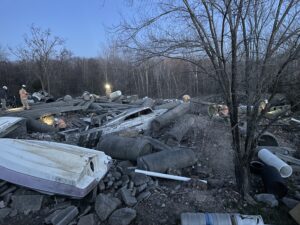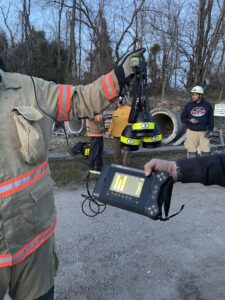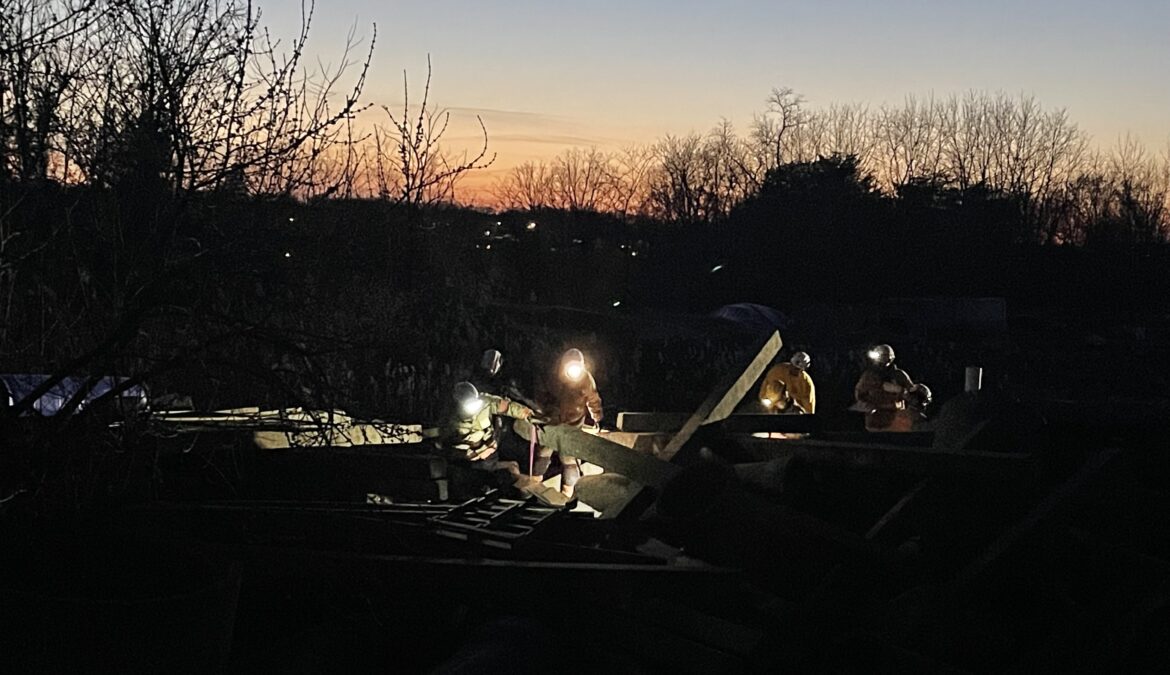The Montgomery County Fire and Rescue Service (MCFRS) and Prince George’s Fire Department (PGFD) participated in the Federal Emergency Management Agency (FEMA) Technical Search and Rescue class to enhance the life-saving skills of firefighters during a complex rescue event. The course provides practical knowledge of technical rescue techniques by incorporating advanced technology that helps locate, remove, and recover trapped victims. The Maryland-National Capital Region Emergency Response System (MDERS) supported MCFRS and PGFD personnel attending the technical search and rescue course to enhance firefighter safety, equipment deployment, and victim management.
The purpose of technical rescue serves to provide an immediate rescue process that deploys skilled firefighters and appropriate equipment to ensure an effective response operation. Technical rescue is the use of special knowledge, skills, and equipment to safely resolve complicated rescue situations (PGPD Special Operations, 2010). Technical rescue encompasses specialized subsets, including structural collapse rescue, rope rescue, confined space rescue, trench rescue, rope rescue, vehicle/machinery rescue, and water rescue.

In the National Capital Region (NCR), structural collapse incidents require specialized response efforts from firefighters to maintain public safety. MDERS provided an opportunity for 18 participants from MCFRS and PGFD to attend FEMA’s Technical Search and Rescue class to improve their abilities in the rescue process. The technical rescue class is designed to provide personnel with the expertise and abilities necessary to perform technical search functions (TEEX, 2023). This course provides an engaging learning experience for participants to approach any rescue situation safely. Beginning with an introduction to technical rescue and subsequent field exercises, the instructors discuss the necessary tools, equipment, and search operations to reinforce proper response techniques. Participants were introduced to the concepts of using the rescue equipment through real-world examples to perform exploration strategies.
More specifically, participants learned about the principles of technical rescue surrounding the different environments in which first responders may respond. Discussions consisting of technical search procedures and innovative rescue equipment allowed participants to recognize certain methods that help bolster the identification of trapped individuals. The instructors presented in-depth coverage of the collapsed building types, confined spaces, hazards, and personal protective equipment (PPE) that first responders must consider during a technical rescue event. Participants learned about operating listening devices, camera systems, and sensor technology to improve scene management.

During the field exercises, participants worked collaboratively to deploy search equipment within the parameters of a simulated structural collapse incident. Participants conducted a preliminary assessment of the collapsed structure to determine hazards, points of entry, exposures for collateral damage, and possible locations of victims. This information allowed participants to strategically position cameras and use life detection devices near trapped individuals to increase situational awareness. These technologies provided the ability to develop more informed and accurate decisions that make the response phase less labor intensive.
The Technical Search and Rescue class offers the practical knowledge that all NCR first responders continue to train on for future structural collapse events. As a part of our mission, MDERS places significant emphasis on providing joint training opportunities to first responders from Montgomery and Prince George’s Counties to mitigate public safety threats collectively. MDERS will continue supporting integrated training courses to ensure a higher quality of preparedness and response.


